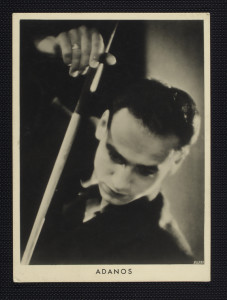Like a magician, a writer’s skill depends on focus. We take the reader over for a look at one thing while something shifts across the foreground. We can widen the focus to take in an entire street, country, world, evolutionary time period, or we can narrow to a single taste of a character’s lips.
Deciding where to place the reader’s focus can be challenging. You’d like them to have all kinds of information that appears necessary on first draft (or maybe you need to add it back in on the second), but the real truth is that the reader is Goldilocks: she wants just the right amount of information to keep her engaged, but not so much that it interferes with the story.
When I write, my vision often narrows to the size of my laptop screen, but it never stays that small. On great days, I fall between the sentences to find myself on the other side of the story netting just what I need to show the reader to make them feel like they’re with me.
In other words, I shift my focus from narrow to wide.
Although I do this regularly on the page, it didn’t occur to me to consciously try this in regular life until I read Les Fehmi’s “The Open-Focus Brain: Harnessing the Power of Attention to Heal Mind and Body.” A clinical psychologist and researcher, Fehmi helped pioneer biofeedback in the 1960s and later turned to generating consistent alpha states to enhance relaxation and improve performance through neurofeedback.
Fermi’s exercises involve imagining the space between parts of your body as well as how you and your body intersects with the space surrounding you.
After working through one of his exercises (which is really just sitting there and being willing to go along for the ride by listening), I find my spatial perception widens and I am less conscious of where my body ends and the rest of the world begins.
While seriously relaxing, this state also appears to make it easier to draft new scenes and consider the daunting task of researching an historical novel. Since this feels new to me, I’ll have to let the writing cool and check back a few weeks from now, but the state feels like moments that used to happen to me as a kid, when the space between raindrops was as important as the rain, when I could trace a single snowflake from the top of the window to the snow pile or when I marked the shadows of street lamps as my dad drove us home from dinner with my godparents.
It’s a little like being able to step between the seconds of time and look on both sides—and almost as much fun as falling into the page of a story.
